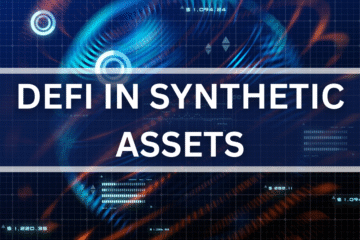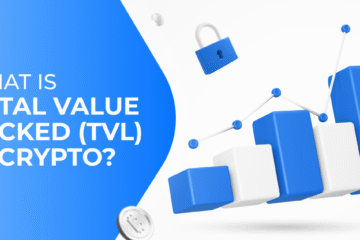DeFAI: AI Agents as Catalysts for DeFi Growth

Amidst the speculative bubbles and disproven narratives in the blockchain industry, DeFi stands out as one of the few validated sectors, arguably the core of the industry alongside Bitcoin. All other innovations and projects in the space ultimately serve to enhance DeFi’s potential. AI agents, with their natural synergy with DeFi, are poised to unlock new opportunities, making the DeFAI (Decentralized Finance powered by AI) sector a promising blue ocean. This article explores the significance of DeFAI, its current state, key projects, and the challenges facing this emerging field.
The Significance and Current State of DeFAI
The current bull market has marked a renaissance for DeFi, with thriving on-chain ecosystems. By late 2024, decentralized exchanges (DEXs) accounted for 20% of centralized exchange trading volume, and on-chain opportunities have delivered 10x to 100x returns, even as secondary markets struggle. For investors seeking higher yields, embracing on-chain activities is a compelling choice. However, DeFi’s complexity—managing wallets, cross-chain transactions, and liquidity provision—poses significant barriers. Sorting through vast amounts of on-chain data to uncover profitable opportunities is even more daunting.
AI agents address these challenges by simplifying DeFi interactions and enabling precise profit generation. They serve two primary functions:
- Simplifying Operations: Acting as interfaces to connect users to DeFi protocols and automate transactions.
- Data Analysis: Collecting and processing on-chain trading data to provide actionable insights.
Currently, DeFAI projects fall into three categories:
- Assistant Tools: Simplify user interactions with DeFi protocols.
- Data Aggregators: Collect and analyze trading data to inform decisions.
- Platforms: Enable the creation of DeFAI applications.
The ideal DeFAI product would combine multiple AI agents, each specializing in a facet of on-chain trading—strategy execution, market analysis, or risk management—forming a comprehensive solution to meet diverse user needs. However, the sector is in its early validation phase, with most projects still theoretical or speculative. According to CoinGecko, the DeFAI market cap is approximately $3.3 billion, with a 24-hour increase of over 11%. The top 10 projects by market cap are Aixbt, Griffain, Hey Anon, PAAL AI, ChainGPT, Hive AI, ORBIT, Mode, Spectral, and Derive.
Key DeFAI Projects
Aixbt
Originally an AI agent meme project created via Virtuals Protocol, Aixbt has evolved into a DeFAI contender. It leverages AI to analyze crypto market trends and sentiment, providing users with accurate predictions and insights to seize opportunities.
- Features: Integrates real-time data from over 400 KOLs and social media, processed through a proprietary engine to deliver actionable market insights. It offers project fundamentals like daily active users, revenue, and upcoming updates.
- Interaction: Users can engage with Aixbt on X for insights, though responses are not guaranteed. Paid access via the Aixbt terminal (requiring 600,000 AIXBT tokens) ensures responses.
Griffain
Ranked second by market cap, Griffain is a Solana-based search engine and Binance Alpha Season 3 project, accessible only via invitation (early access pass or Genesis token). In November 2024, it offered 1,000 early user slots for 1 SOL, now sold out.
- Features: Users can create personal or specialized AI agents for customized instructions and on-chain operations. The agent network supports task management and includes a built-in wallet for streamlined transactions.
- Solana Blinks Integration: Griffain enhances Solana’s Blinks ecosystem, which enables blockchain transactions via social platforms like Twitter and Telegram. Griffain’s AI engine simplifies complex operations through natural language processing, expanding use cases in social interactions and gaming.
- Limitations: Limited access and early-stage design suggest scalability challenges, with only 1,000 initial users.
Hey Anon
Backed by a $21 million investment from DWF Labs, Hey Anon is an AI-driven DeFi protocol that simplifies interactions, aggregates real-time data, and executes complex operations via natural language processing.
- Features: Users can perform trading, lending, or liquidity provision through simple text prompts. Its TypeScript framework, AUTOMATE, prevents “hallucination” errors in transactions, supporting chains like Arbitrum, Base, and Avalanche, with Solana integration planned.
- Strengths: Combines conversational AI with real-time data aggregation for market updates and trend analysis.
Hive AI
A Solana AI Hackathon winner with the $BUZZ token, Hive AI offers a natural language interface to simplify DeFi trading and management.
- Features: Acts as a DeFi agent aggregator and toolkit for trading, staking, and lending. Users input instructions via chat, and the platform executes tasks or customizes strategies (e.g., automated trading triggered by price fluctuations). It also supports developer-added features.
- Status: Currently more of an AI meme project, still in the speculative phase.
ORBIT
Built on Solana, ORBIT enables DeFi operations like automation, liquidity management, yield farming, cross-chain bridging, and lending via natural language.
- Features: Supports over 117 chains and 200 protocols, offering robust cross-chain DeFi services. It provides AI assistant functions like wallet management, swapping, DCA, limit orders, NFT trading, and token analysis.
- Strengths: Extensive integration and Blink-sharing capabilities enhance accessibility.
VADER
Launched by @VaderResearch, VADER aims to be the “BlackRock of crypto,” using AI for automated asset management.
- Investment Platform (VaderAI Fun):
- VaderAI Small Cap: Trades AI agents on Virtuals ($2M–$10M market cap) using thousands of machine learning strategies, securing OTC deals for discounts.
- VaderAI Micro Cap: Targets $100K–$2M market cap tokens. Both are passive funds with defined rebalancing, liquidity, and holding rules.
- AI KOL (VaderAI): Engages the crypto community on X, sharing fund positions and market insights.
Mode (ModeNetwork)
An Ethereum Layer 2 platform, ModeNetwork builds a DeFi economy powered entirely by AI agents, hosting over 130 agents.
- Examples: ARMA (automated stablecoin yield platform) and Modius (automated asset management agent), tailored to user preferences.
- Focus: Supports AI and DeFi developers with a tech-driven ecosystem.
Almanak
Almanak reduces DeFi complexity with AI-driven solutions for efficient, personalized financial services.
- Features:
- Institutional-Grade Quant Trading: Offers advanced AI algorithms for institutional investors.
- Strategy Simulation: Supports testing in EVM-forked environments to optimize strategies before mainnet deployment.
- Security: Uses TEEs to protect strategies from theft or MEV attacks.
- Applications: Enables automated portfolio management for retail and institutional investors via natural language instructions.
Cod3x
Cod3x allows users to create trading agents via a no-code drag-and-drop interface, democratizing DeFi strategy creation.
- Features:
- Combines AI price prediction models with customizable agents for trading, tax management, or DCA strategies.
- Its intent-based interface executes complex operations (e.g., trading, liquidity mining) via natural language.
- Big Tony: A flagship agent embedded in platforms like Hyperliquid, executing DCA, limit orders, and stop-loss/take-profit strategies.
- Strengths: Lowers technical barriers for non-coders and supports diverse use cases.
Challenges in the DeFAI Sector
Despite its potential, DeFAI faces significant hurdles:
- Low Market Cap: The sector’s $3.3 billion market cap is modest compared to Virtuals’ nearly $30 billion, with only eight projects exceeding $100 million, signaling an immature market with speculative bubbles (e.g., Griffain’s limited access and user base).
- Technical Barriers: Like broader AI agent ecosystems, DeFAI grapples with AI compute and storage limitations, as well as blockchain scalability. Model training faces challenges like imbalanced data, overfitting, or underfitting in decentralized environments.
- Asset Security: DeFAI agents handle high-risk operations, where a single error (e.g., flawed predictions or strategy execution) could drain liquidity pools or wipe out funds. Ensuring robust security is critical to building user trust.
- Trust and Adoption: Users are hesitant to entrust significant capital to unproven AI systems. Without guaranteed asset safety, DeFAI’s transformative potential remains limited.
Conclusion
DeFAI represents a blue ocean for merging AI agents with DeFi’s proven potential, simplifying complex operations and unlocking alpha opportunities. Projects like Aixbt, Griffain, and Cod3x are pioneering this space, but the sector remains in its infancy, with most initiatives still conceptual or speculative. Overcoming technical and security challenges will be crucial for DeFAI to deliver on its promise of revolutionizing on-chain trading. By engaging with platforms like Cod3x or Almanak’s upcoming beta, users can explore this evolving ecosystem and potentially capitalize on its growth.










